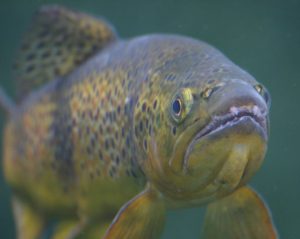The fishing industry in Canada is well-developed and viable, with a total worth of over CAD $5 billion. Fishing companies provide over 120,000 jobs across Canada, including in coastal and rural areas.
Problems and Prospects
During the last decade, government assistance shifted from targeted, large subsidies to targeted, small subsidies. This means higher direct costs for fishing companies, together with increased debt and capitalization. Measures and activities adopted and implemented to optimize the fleet and equipment resulted in significantly higher debt loads. Decreased flexibility and adaptability are also a source of concern due to limited license privileges, limited entry systems, and other factors. At present, the trapping, hunting, fishing, and agriculture industries have a higher total debt load compared to industries such as coal and petroleum products, quarrying and mining, medicine manufacturing, soft drink and food manufacturing, rubber products and plastics manufacturing, and many others. Many fishing companies rack up debt on equipment and supplies such as unpaid fuel and repairs to vessels. There are companies that already sold some of their properties to repay debt, which in practice means that they are downsizing.
Possible Solutions
There are several solutions to look into when struggling with debt in the form of business and commercial loans, personal loans, and credit card balances. Debt consolidation loansare offered by different finance providers, including online services, brick-and-mortar banks, and others. If you have business loans, you may want to contact your issuer and ask whether they are willing to renegotiate the rate, terms, and repayment schedule. Debt consolidation, however, allows borrowers to combine different types of credit, including consumer and other loans, credit cards, etc. There are plenty of benefits to debt consolidation, especially if you have multiple unsecured loans to repay, and one is that borrowers are offered a reduced interest rate and hence – a more affordable monthly payment. This is also a good option to simplify your finances and payment schedule and rebuild and establish credit over time provided that you make timely payments. When it comes to the type of loan, there are two options – secured and unsecured, each with its own pros and cons. If you opt for an unsecured loan, the main benefit is that no collateral in the form of valuable asset is required. This means less risk for you as a borrower and more risk for your financial institution. As a result, the interest rate is higher than secured loans, and there are strict credit requirements, i.e. you must have a very good or excellent score to qualify. A secured loan is a second option whereby the borrower is asked to pledge some asset, i.e. vehicle, accounts receivable, real estate, etc. There are plenty of benefits to look into, including higher borrowing limits, attractive repayment terms, more relaxed qualification requirements when it comes to income level and credit score, and competitive interest rates. On the downside, the main risk is potential loss of the collateral in case you are unable to meet your monthly payments. There are other solutions to look into, for example, formal proposal to financial institutions, debt restructuring, and filing for bankruptcy as a last resort. The reason is that this is a major blow on your credit score.
Not only companies struggle with debt, many individuals also do. One way to get out of debt is to get a debt consolidation loan, and combine all your debts in one, which is easier to manage and has lower interest rate compared to credit cards – https://www.creditcardsforbadcredit.ca/refresh-financial-innovative-financial-products/ and bad credit loans. If you need a credit card you can apply for Neo Financial credit card, which is relatively easy to get: https://www.creditcardsforbadcredit.ca/neo-financial-secured-credit-card-and-money-account/ You may also visit our sponsor: https://www.creditcardsforbadcredit.ca/

Recent Comments